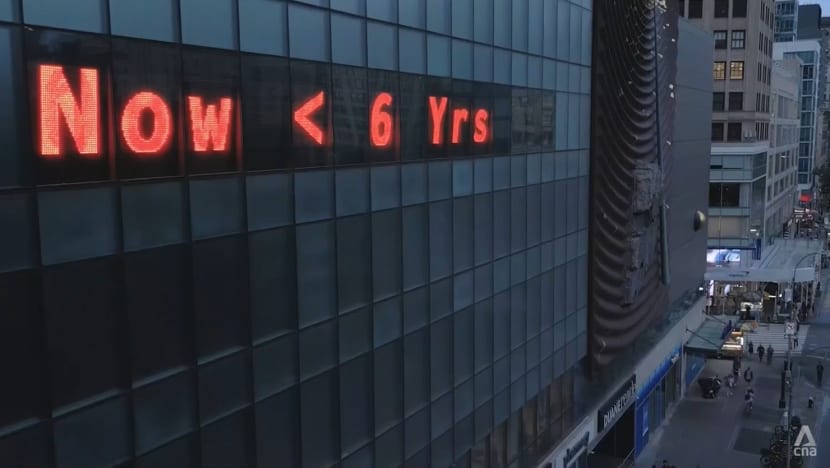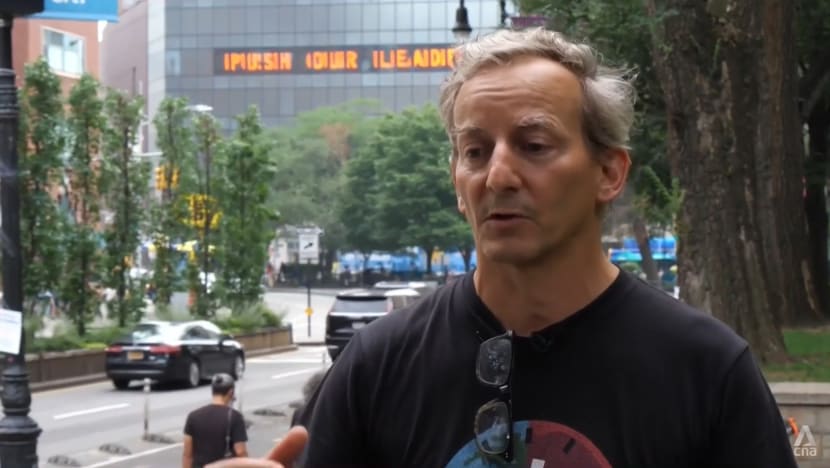The world now has less than six years to prevent irreversible effects of climate change
Launched in September 2020, the Climate Clock towers four storeys above New York’s Union Square in downtown Manhattan, and similar ones have sprouted up in other parts of the world.

New York City’s Climate Clock towers four storeys above Union Square in downtown Manhattan.
NEW YORK: New York City’s Climate Clock ticked down below the six-year mark for the first time on Saturday (Jul 22), raising the urgency for the world to hit crucial climate goals.
The clock shows how long the world has left until global temperatures hit 1.5 degrees Celsius of warming, a point of no return where the worst effects of climate change would become irreversible.
Launched in September 2020, it towers four storeys above New York’s Union Square in downtown Manhattan.
It was one venue at which activists around the world gathered to mark Climate Emergency Day on Saturday, with thousands of people gathering across five continents, calling on governments to stand up and take notice of the climate crisis.
TIME OF THE ESSENCE
The founders of the Climate Clock movement call it a global symbol of urgency and a call to action.
Climate Clock CEO Andrew Boyd told CNA that time is of the essence in fighting global warming.
“Climate change is not some sort of scientific projection. It is happening now, it is happening here. It is happening to all of us, and it’s going to get worse,” he said.
“And our job is to make it get as least-worst as possible by moving forward on ambitious solutions that create a juster world and preserve a livable one.”

The clock also monitors how much of the world’s energy comes from renewable sources.
While clean energy currently constitutes just over 13 per cent and continues to increase, organisers said it is still not fast enough.
They want a shift to 100 per cent renewable energy before the end of the decade.
EXTREME WEATHER GLOBALLY
Similar clocks to the one in New York have appeared in other parts of the world, including in London’s Piccadilly Circus, Tokyo, Japan and at Delhi Gate in India.
Many of those places have themselves experienced extreme weather in recent weeks and months.
In Japan, flash floods have killed several people after what officials called the “heaviest rain ever”.
Meanwhile, Europe is facing wildfires and record-breaking temperatures.

Across the United States, more than 100 million people are dealing with an oppressive heat wave, while others are battling strong thunderstorms.
Climate experts have attributed such extreme weather patterns to global warming, and warn that heatwaves will become more frequent and more severe, with worse consequences on populations.
Such existential threats are driving activists in the climate movement.
“People are gathering, marking impact zones, whether that’s from droughts or bad harvests or toxic pollution from the fossil fuel industry or floods, (and) marching from places of that kind of devastation in their communities to the halls of power, and demanding that their leaders act in time to implement systemic solutions to observe a livable planet,” Mr Boyd told CNA.














